
On Friday I installed the 74th and final window in the barn, each one individually made there. This particular window went into a space where I originally thought I would install a shower, but the hydro-logistics were not conducive. So, for the past few years there has been just a piece of plywood over a hole in the barn siding.
Flash back several years to a memorable day that began in western Pennsylvania visiting our daughters at college. I had located a large inventory of salvaged thermal window panels in Ohio, which as you might know is the state right next door to western Pennsylvania. The plan was to have breakfast with the girls, drive to Ohio to get the glass (part of a window factory liquidation) then go to The Barn and drop them off.
It is only when you drive across the United States that you learn how really, really big it is (Note: this trip preceded my travels of the past 18 months, and two trips driving to Texas and back drove home that lesson!).
Well, Toledo, Ohio is essentially in eastern Illinois. And, my night vision isn’t the best so the final few hours of that trip involved my wife driving a van full of glass, in the dark (she is an early morning person and starts winding down immediately after supper, so she was not thrilled at the evening chore until midnight), in the rain, on unfamiliar winding mountain roads as we were coming from an unfamiliar direction. I am not the brightest bulb in the pack, but believe me when I say I will not replicate that adventure of driving 700 miles, the final 500 miles with a half ton of glass in the back of the van.
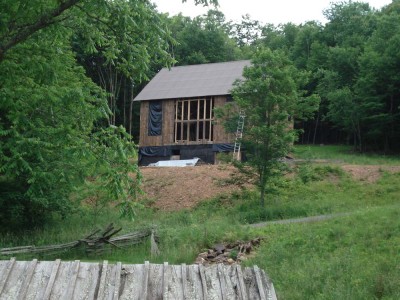
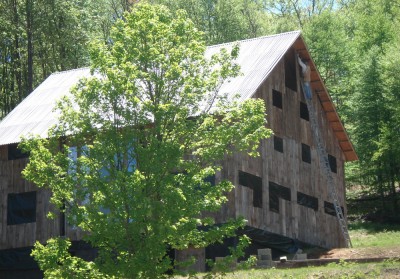
Over the next two years my friend CraigC and I fabricated and installed dozens of fixed windows, in addition to the dozen huge window plates I had previously installed by myself.

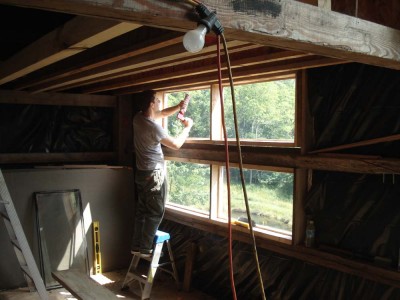
Other than some storm damage requiring some window panels to be replaced, I am now pretty much done with windows in The Barn. The end result is not displeasing.

I have a few panels left, so I can replace a few over the coming years. After they are consumed, I will have to begin the hunt again.

With humble delight I am able to announce the exhibit “The Tool Cabinet and Workbench of Henry O. Studley” accompanying my now-in-progress book “Virtuoso” from Lost Art Press. My thanks to the owner of the incomparable tool cabinet and work bench for his generosity in sharing these treasures with us cannot be fully expressed.
For the first time in history (and perhaps the last) the incomparable tool cabinet AND its companion workbench, which has never before been seen by the public, will be available for viewing in an intimate exhibit that will be an amazing experience for all Studley Tool Chest aficionados and anyone who cares about brilliant design and skillful craftsmanship.
This three-day-only exhibit will be at the Scottish Rite Temple of Cedar Rapids, Iowa, May 15-17, 2015. The admission for this once-in-a-lifetime event with a unique visitor’s experience will be $25. The number of tickets available will be restricted by the logistics of the schedule and the venue.
As additional details are known they will be posted both here at www.donsbarn.com and over a new dedicated site for the exhibit, www.studleytoolchest.com (that site is already loaded with a ton of information). The schedule and location of this event coincides with the nearby Handworks, so you are bound to risk tool ecstasy overload for one glorious weekend in eastern Iowa next spring.
I hope this explains some of my gaps in blogging, and will reveal the full plate I have facing me now. Roubo 2. Studley book. Studley exhibit. Recovering from the carnage of winter on the homestead. Developing and distributing traditional finishing materials. Yup, pretty full.
No matter what medium I am working – I love creating.
I especially enjoy things like woodworking and illustrating, because they are tangible and obvious. The plane takes a shaving. The pen leaves a line. You see everything you do, as you are doing it. Even when I’m doing graphic design in software where my tools are a mouse, and the arrow at its command, I get to see what I am doing and how it’s affecting the project.
Then there is the dark side of design work – namely the backend of websites, and their vast underworld that is code. It’s not something I particularly enjoy, but like sanding it is a necessary aspect of a project. Don’t get me wrong, I’ve had times where code and I had fun together, but tonight I’m sitting in the aftermath of a 72-hour ordeal that’s left me worn and temporarily jaded.

This adventure actually began last month. After going live last summer, this website was stout and dependable. Sure there were a few tweaks here and there, and some added security as news of increased hacking activity spread last fall.
Then last month we started having issues with the server that hosts the website getting hung up on Apache scripts, causing the site to not load (believe me, you do not want me to explain that – unless you’re having trouble sleeping). After chasing that problem for several weeks and working with various support specialists at our hosting company, they finally moved everything to a new server and all seemed well – until Sunday evening.
As my family was finishing Easter dinner, I saw an email from Don pop up on my phone. The site wouldn’t load again, and this time there were two words you never want to see – fatal error.
Long story short, the problem that eluded us was ironically caused by that added security I mentioned. Last month’s update had a bad line of code, and it was not playing nice with others. To assure that the issues were completely eradicated, a colleague and I spent the last 72 hours rebuilding the website.
It is now running strong, and even faster than before. I’ll be doing better tomorrow too, as I’m putting down the mouse for the rest of the week – and picking up a plane.
Jason Weaver is the webmaster for the Barn on White Run. He is a graphic designer, woodworker and pastor, in Topeka, Kansas.
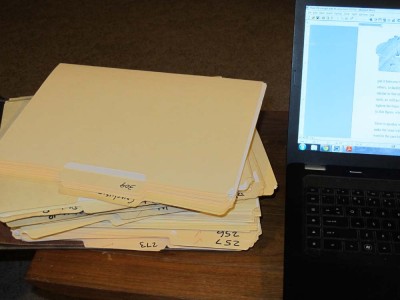
Now that Roubo 2 is winging its way to the desktops of the LAP magicians I wanted to take a minute to reprise our work thus far. That 5-inch thick stack of folders next to my laptop is the version Chris Schwarz will be working his way through in the coming days. Yes, it really is that big.
I hope to have a bound version of the submitted draft at the local chapter meetings of the Society of American Period Furniture Makers the next two Saturdays; the Virginia Chapter is meeting at the Leesburg, Virginia, the following Saturday is the Chesapeake Chapter at the Woodworker’s Club in Rockville, Maryland.
Even before Roubo on Marquetry was in the production pipeline in early 2013, we were hard at work on Roubo on Furniture Making. By May of 2011 we began assembling translated sections, with editing and rewriting as time allowed. Now we find ourselves on the cusp of the editorial phase, and for an abbreviated peek behind the curtain, here are the innings of labor for a project like this.
1st Inning – Michele creates a transliteration from the original text.
2nd Inning – Don chops up all the Plates into individual figures and plugs them into the transliteration; Don engages in in-depth review, editing, and rewriting of the transliteration to make it comprehensible to a contemporary world
3rd Inning – Philippe and Michele review Don’s edits and returns the sections to Don with copious edit tracking
4th Inning – Don reviews the edits and incorporates them into the manuscript, then forwards it on to external readers
5th Inning – Don and Michele sit together at the dining table and Don reads sections aloud while Michele follows along in the original French. These sessions, usually four hours because that is all the longer I can read out loud, have been astonishingly helpful in catching typesetting errors, syntax, word choice, and overall literary flow.
6th Inning – Don revises the manuscript sections based on the notes from our read-out-loud sessions combined with any comments from the outside readers, and sends them along to Lost Art Press
7th Inning – Lost Art Press edits the thing; Don reviews the edits
8th Inning – Wesley designs the books, Don reviews the galley proofs
9th Inning – the book gets manufatured and distributed
And that is where we are right now only thirty-six short months since beginning in earnest, in the bottom of the sixth.
Go ahead, write a book. I dare you.
As we commemorate the national day of funding government(s), generally argued as a “necessary evil,” it is worth reflecting on the thoughts on the matter from the First Founding Dad.
Government is not reason; it is not eloquent; it is force. Like fire, it is a dangerous servant and a fearful master. — attributed to George Washington
As someone who unleashed deadly force against American citizens in The Whiskey Rebellion, I’d guess old George knew exactly what he was talking about.
It’s a big day around here as the first sections of the Roubo 2 manuscript were submitted for editorial review by the magicians at Lost Art Press. It is worth noting that after reading this material perhaps a dozen times, I still find it engages, educates, and interests me. This is a work about which we are very pleased. I think you will be pleased too.
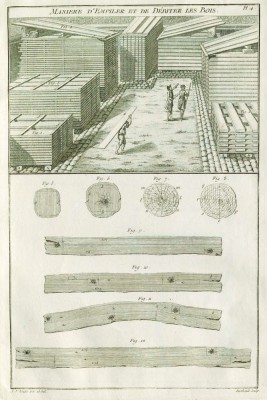
Thanks to things we learned during the creation of the first volume, To Make As Perfectly As Possible: Roubo On Marquetry, our working pattern is fundamentally different from a document traffic flow plan. This manuscript, while almost twice as long as the first one, is taking less than half the time.
Now we treat each Plate and its accompanying text as a stand-alone document. So in the end I will not be submitting one big book manuscript; I will instead be submitting 99 documents. I’ll let Chris and Wesley melt them together into the whole. Some of these sections are brief – the shortest is two pages – while others are several dozen pages. On average they are about 10 pages long, so yes indeed, the working manuscript is more than 900 pages long.

I will sit down with Michele next week for our penultimate oral reading session, with the final one probably in a fortnight. I am also laboring on the essays and photographic enhancements for the book, but as of right now Chris has something to sink his teeth, er, red pen, into.
Watch out Henry O. Studley, I’m coming for you!
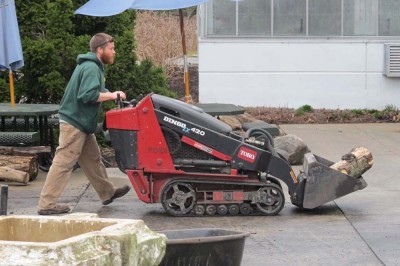
While touring the Krohn Conservatory in Cincinnati last week we encountered, well I encountered, “machine lust.” The staff was constructing a new exhibit in one of the conservatory halls, and there was a young fellow using this machine. Given the tasks awaiting me at the homestead over the coming years of morphing fully into my emergent status as an Appalachian American, where the main crop is rocks, it seems a perfect fit. That, and a bush hog. Yep, I think one of these is nearly obligatory.
Now if I can persuade the CFO…
At the clap of the audio/video synchronizer we were off and running.
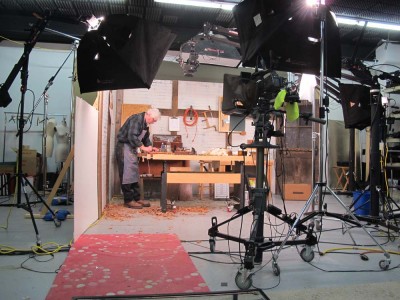
With director David Thiel, videographers Ric and Al behind the cameras we maintained a breakneck pace for two days in filming the video “Historic Transparent Finishes” for the multimedia division of Popular Woodworking. Thanks to their professionalism and some preparations by me we had only two “second takes” in the two days; one of them was to fix a wiggling work bench on the very first segment.
The world of finishing, even transparent finishing, even historic transparent finishing, is simply too big to cover in a single video. My first proposal was for an eight-hour video, which caused David to take a big gulp until he saw that I was actually projecting a two-hour video for a small section of the larger body of material.
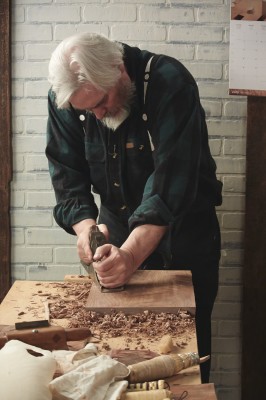
The video is actually a fairly narrow scope as I focused by discussing and demonstrating only wax and shellac finishes over hand planed wood. Starting with rough sawn lumber and finishing with glistening, shimmering, and tactile delights possible with planes, scrapers, polissoirs, brushes, and pads. No oil/resin varnishes, no coloration, no paints, no gilding. Just simple and easy (? straightforward at least).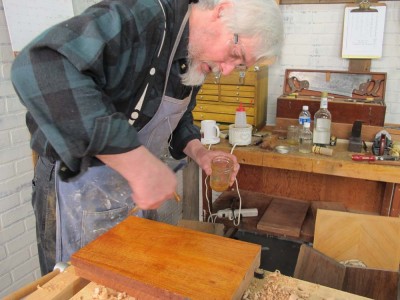
We worked from a detailed outline I had prepared for David, and we did very little out-of-sequence shooting, and then only when it was the only way to get everything done in a timely manner. We were even so efficient that we added three or four vignettes that I had not included in the outline.

One involved the burnishing and varnishing a ball-and-claw leg (thanks Glen Huey for letting me work on one you had laying around) exploring the magic of polished cow horn and filbert mop brushes, which make the finish application so easy it is almost embarrassing. Add an opening, a closing, and some PR snippets and we were done by suppertime of the second day.
As we wrapped up I think it was Ric who said, “Good job. And it was even interesting.” (Did I detect a hint of surprise in his voice?) Of course it was interesting. It was wood finishing!
I was a bit of a zombie the next two days as my wife and I toured Cincinnati and then drove back home to the mountains of the Allegheny Highlands. She says I was just recovering from an adrenalin rush from being “on” for two straight days, and she might be right. I don’t particularly like excitement.
I hope to see a rough cut this week, as Ric said editing it was a piece of cake since the initial work was so clean and linear. I understand the release is sometime around August, so stay tuned. I’m sure it would make a great Christmas gift for your thirty or forty closest friends.
It was more than a week into Spring, and being this Spring the sun rose to reveal an inch of icy snow coating everything the morning we were to visit the incomparable Conner Prairie historic complex, one of the nation’s premier enterprises of historic reenacting and interpretation. Once the slop was scraped from my truck we were on our way; one advantage was that the bitter cold kept the crowd small and we had the place nearly to ourselves.
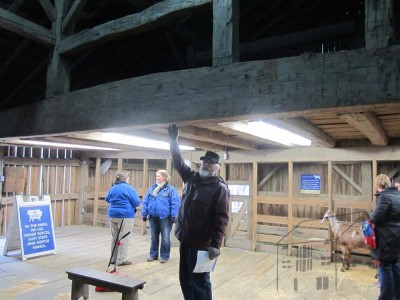
One of the highlights was the timber frame barn in the Conner homestead. The main cross-beam is a gargantuan oak timber more than 12” x 24” x 40 feet long (the historic carpenters there figure the tree trunk was more than eight feet in girth) and the longitudinal mid-rafter beam was an 8×8 perhaps 70 feet long.

I especially enjoyed our time in the carpenter’s shop, where my wife and I were the only visitors. This allowed for a lengthy conversation with the proprietor about tools, wood, and their lathe. He showed it to me and allowed me a turn.

It is a magnificent shop-built machine with a 300-pound flywheel that can get away from you fast! Since I am a head taller than “Mr. McLure” it was very awkward for me, but I could see one of these fitting into the fabric of The Barn.

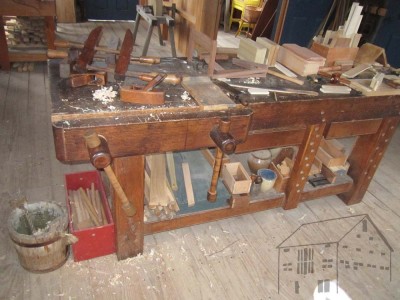
In the center of the one end was the impressive work bench, which had been built in the shop in years past. A copy of no specific documented model, it is instead a combination from a historically accurate vocabulary.
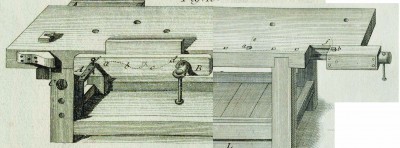
It seems to be about two parts Roubo with one part of Moxon and a dash of Nicholson. The six-inch-square oak legs are capped by a four-inch slab top, and the fixed deadman is stout as well. There is no real woodworker in America who would not be delighted to have this beast in their workspace. I know I would.
If you are going near the Indianapolis area, take a peek.
Recently I spent two days in Cedar Rapids, Iowa, with Team Abraham of Benchcrafted, the brilliant folks who have spawned a revolution in woodworking vises. Father John Abraham and his younger brother Jameel have become some of my favorite people in recent years, and time with them is always a pleasure.

This trip was mostly with Jameel. At one point last year three of the four polymaths I know were with me in the same room; Jameel, Narayan Nayar, and the owner of the Studley Tool Cabinet. My fourth polymath friend is my former colleague Mel Wachowiak at the Smithsonian. I find myself enriched and challenged by each and every interaction with these men.

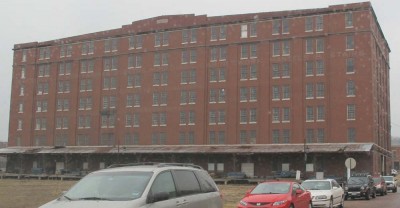
Jameel (and Father John) and I had some business to conduct, some of which you may know about already, and some which will be made known to you in the coming weeks. Part of our time was spent with Jameel squiring me around the countryside to visit a machine shop, a foundry, and a patternmaker. At the final stop he pretty much had to drag me out so we could get back to Cedar Rapids for dinner as the patternmaker and I were swapping tales from the pattern shop. Downtown Dubuque is chock full of vintage factory buildings, especially woodworking factories as the city was once the largest millwork center in the country.

Most of you know Jameel for his exquisite craftsmanship in wood and creative insights. But there is a much deeper presence here. Perhaps the most awe-inspiring moments of the visit were when Jameel showed us his fine art, executed as spiritual devotion for the small chapel currently pastored by Father John, and their dad Father Raphael before him.
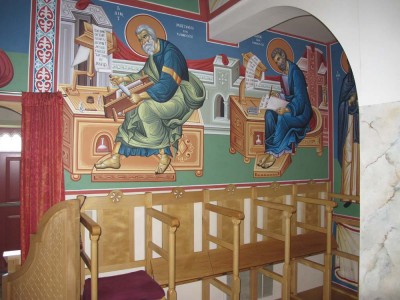
While I am of a dramatically different liturgical tradition, at the foundation we share the same language in our comprehension of the temporal and the eternal.
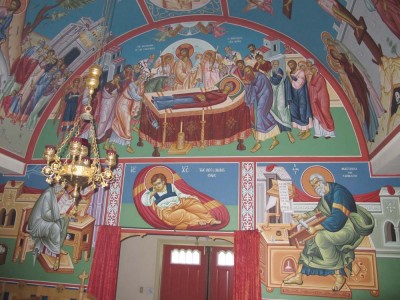
The works speak for themselves, and redound on him favorably in demonstrating the honest piety and Orthodox spiritual worldview of a humble man on whom remarkable gifts have been bestowed.
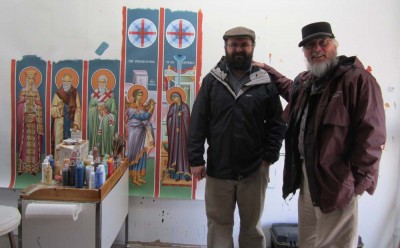
Like I said, he is a polymath.































Recent Comments